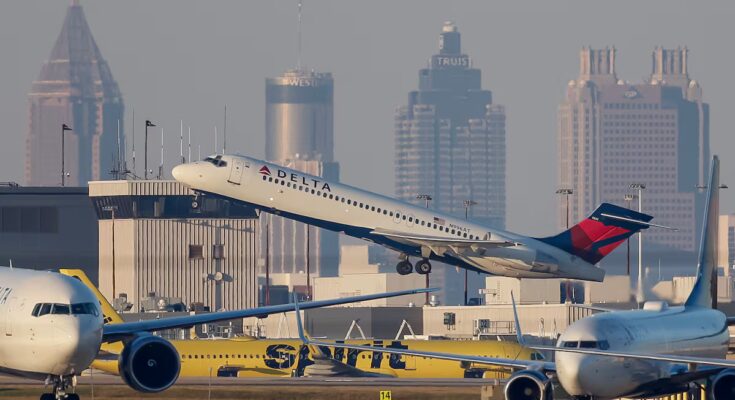Air traffic in the United States will be reduced by 4% at 40 airports starting Friday due to system overload caused by an increase in air traffic controller absences following the 36-day federal government shutdown. Flight reductions could steadily increase to 10% by November 14, according to government and air traffic officials.
The flight restrictions will affect some of the country’s busiest airports, including those in New York, Los Angeles, Chicago, Atlanta and Washington DC, according to a list shared by the Trump administration hours before the cuts took effect. For now, international flights are exempt from the reductions.
Air traffic restrictions are increasing pressure on Republicans and Democrats on Capitol Hill to negotiate an end to the shutdown.
Many travelers on Thursday still didn’t know whether their flights would be canceled the next day, following the announcement of cuts Wednesday by Transportation Secretary Sean Duffy and FAA Administrator Bryan Bedford.
The reduction in air traffic will affect the 30 airports with the highest traffic volume in major metropolitan areas, what the FAA calls the “Core 30 list.” Additionally, some medium-sized airports that primarily deal with commercial traffic will be affected, as well as some airports that cater to private jets.
According to Bloomberg, the air traffic cuts will force the country’s major airlines – American Airlines, Delta, Southwest and United Airlines – to reduce their total seat capacity by 6%.
“Per FAA requirements, we reduced flight schedules by 4% at 40 airports from Friday through Monday, for a total of approximately 220 canceled flights each day. Even with these cancellations, we expect to operate approximately 6,000 daily flights,” American Airlines said in a statement.
The already stressed aviation sector is now on the brink of collapse due to the government shutdown, which has left thousands of federal aviation workers without pay but forced to report to work. There has been an increase in absences as some employees call in sick and have trouble making ends meet, Duffy said last week. FAA employees missed a paycheck on Oct. 28, and the second is due on Nov. 11.
The Transportation Secretary explained that more than 13,000 air traffic controllers have been working without pay since October 1, when the shutdown began. Since then, many controllers and other federal aviation workers have begun taking sick leave. The closure is putting a strain on an already stressed air traffic control system, with thousands of unfilled controller positions and an overwhelming workload.
Pressure to negotiate an end to the government shutdown
Air traffic restrictions are putting pressure on Capitol Hill to end the budget impasse, which is already the longest in history. The government shutdown has forced dozens of federal agencies to close or minimize their operations due to a lack of resources and the absence of an agreement between Republicans and Democrats. Negotiations between the two sides continue with no sign of an imminent deal, despite the threat of thousands of flight cancellations this Friday.
Although some centrist Democrats are trying to reach a deal to end the administrative gridlock, many senators, encouraged by election victories in New York, Virginia and New Jersey on Tuesday, are determined to try to secure a victory against Republicans on health care, where the latter plan to cut spending.
Sources close to the negotiations believe the agreement will not be reached for two weeks, just before Thanksgiving, when thousands of people will travel to join their families.
The reduction in air traffic during the government shutdown is reminiscent of January 2019, when, after 35 days of a government shutdown, the Senate decided to unblock the situation following the FAA’s decision to limit flights at several airports.
The shutdown is also affecting the Trump administration. The president blamed the electoral setback suffered last Tuesday on the budget impasse. And he urged Republicans to eliminate the filibuster, the rule that allows bills to be delayed in the Senate until a qualified majority of 60 votes is reached.
“Democrats will end the filibuster in the first hour if and when they take ‘control’ or power. Republicans have what Democrats want: We should do it, NOW, and have the greatest three years in history!,” Trump wrote on his social media platform, Truth Social.
But Republicans are reluctant to repeat that rule because they fear the consequences if Democrats gain a majority in the Senate, allowing them to pass any legislation without negotiation. Recent polls give the Democratic Party a slight lead in next year’s midterm elections, which could potentially reduce Trump’s power.
Sign up to our weekly newsletter to get more English-language news coverage from EL PAÍS USA Edition



